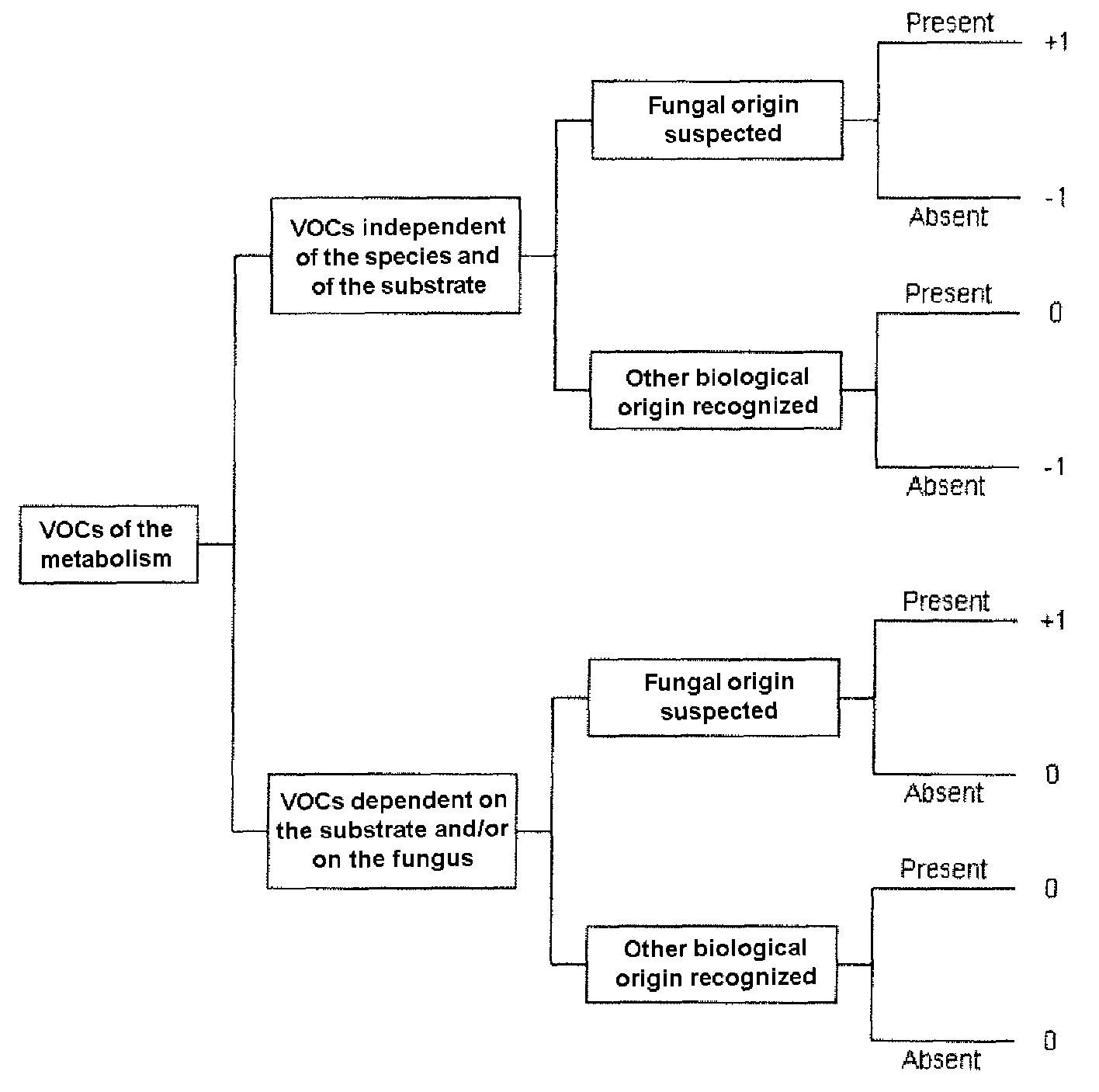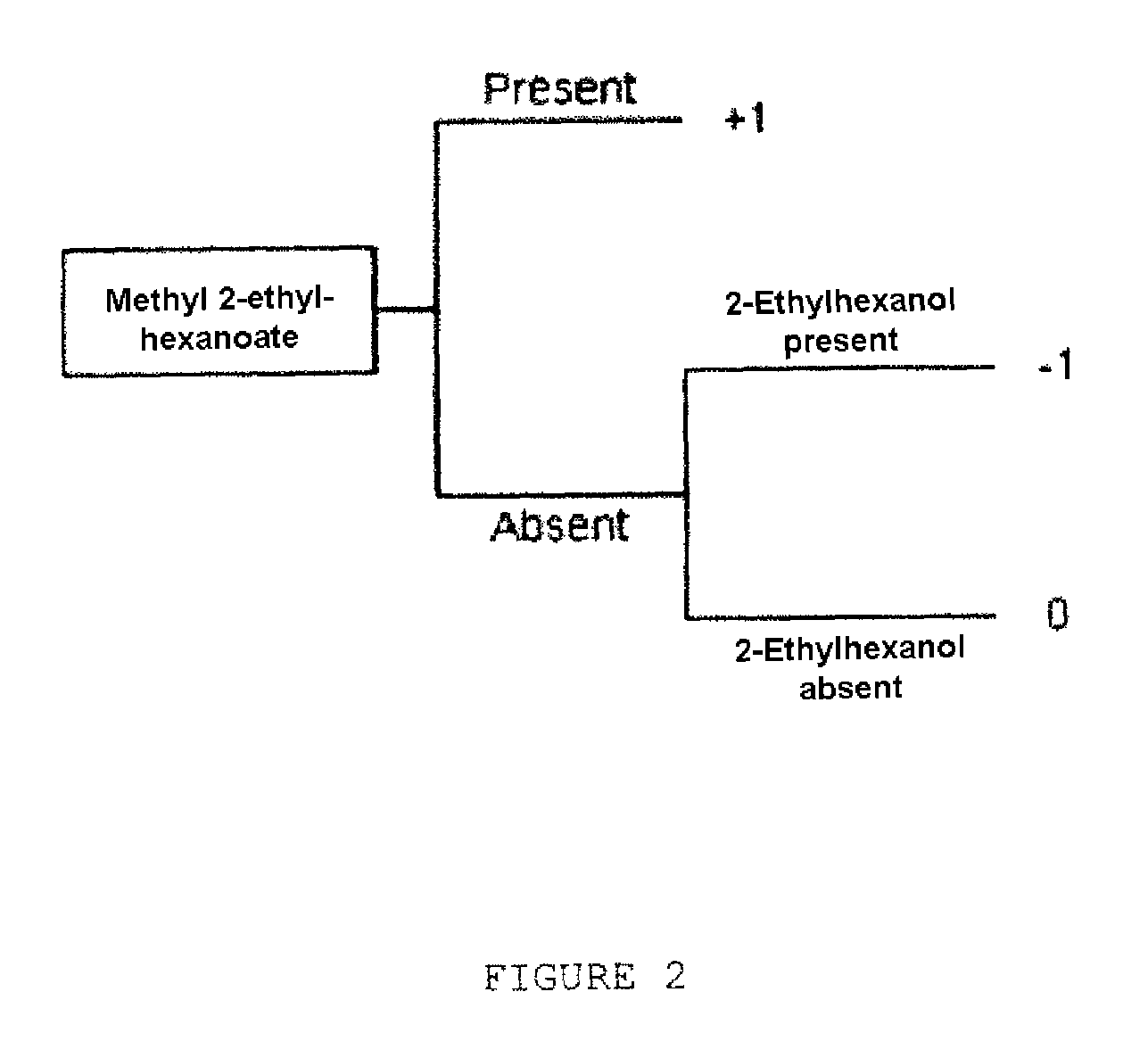Method for detecting fungal contamination
a technology of fungal contamination and detection method, which is applied in the direction of instruments, specific gravity measurement, and mechanical means, etc., can solve the problems of difficult diagnosis of molds in indoor surroundings, long response time of measurement techniques, and inability to detect molds
- Summary
- Abstract
- Description
- Claims
- Application Information
AI Technical Summary
Benefits of technology
Problems solved by technology
Method used
Image
Examples
example 1
Withdrawing a VOC Sample in Indoor Surroundings
[0048]VOC withdrawals in situ were carried out by diffusive sampling over a solid adsorbent of the type of CARBOGRAPH 4®(graphitized carbon black) in twelve housing units. Five of the twelve housing units comprised at least one room having a visible mold stain of greater than 1 m2 (dwellings 1 to 5) and seven of the twelve housing units did not exhibit visible signs of fungal contamination (dwellings 7 to 12). Withdrawing is provided by a diffusion tube. The sampler is composed of a cartridge, of a diffusive body and of an adapter.
[0049]The cartridge is cylindrical (40-60 mesh s.s. net), with an external diameter of 4.8 mm, and contains 300 mg of graphitized carbon the type of CARBOGRAPH 4®(graphitized carbon black). This cartridge is placed before the withdrawing in a diffusive body made of polyethylene. The combination is subsequently screwed onto a rack using a clipable support.
[0050]The passive tubes are exposed on site for a time o...
example 2
Detection of the Presence or the Absence of Certain VOCs
[0052]The tubes containing the adsorbent are transferred into a laboratory analytical line. This line consists of a combination of three techniques:[0053]gas chromatography (GC), used to separate the VOCs,[0054]flame ionization (FID), which makes it possible to detect the various molecules,[0055]mass spectrometry (MS), employed to identify these compounds.
[0056]Chromatograms are thus obtained for each of the twelve housing units and are examined for the presence of the specific VOCs therein (see table I for the VOCs looked for).
example 3
Calculation of the Chemical Index for Fungal Contamination
[0057]A contamination index is subsequently calculated in order to collate all the information provided by the presence or the absence of the specific VOCs identified.
[0058]In order to formalize the set of observations made on the origin of these molecules, the index is calculated as a function of the presence or of the absence of each of these VOCs. The method of incrementation of this index is represented diagrammatically in FIG. 1.
[0059]As regards methyl 2-ethylhexanoate, it has been taken into account that the formation thereof might be due to the conversion of 2-ethylhexanol by the mold. The incrementation rule which has been applied in this case is described in FIG. 2.
[0060]According to the construction of this index, a high value renders probable the presence of fungal growth; in contrast, a low value excludes it.
[0061]Thus, an index value of strictly greater than 0 allows it to be concluded that fungal growth is prese...
PUM
| Property | Measurement | Unit |
|---|---|---|
| diameter | aaaaa | aaaaa |
| height | aaaaa | aaaaa |
| height | aaaaa | aaaaa |
Abstract
Description
Claims
Application Information
 Login to View More
Login to View More - R&D
- Intellectual Property
- Life Sciences
- Materials
- Tech Scout
- Unparalleled Data Quality
- Higher Quality Content
- 60% Fewer Hallucinations
Browse by: Latest US Patents, China's latest patents, Technical Efficacy Thesaurus, Application Domain, Technology Topic, Popular Technical Reports.
© 2025 PatSnap. All rights reserved.Legal|Privacy policy|Modern Slavery Act Transparency Statement|Sitemap|About US| Contact US: help@patsnap.com



